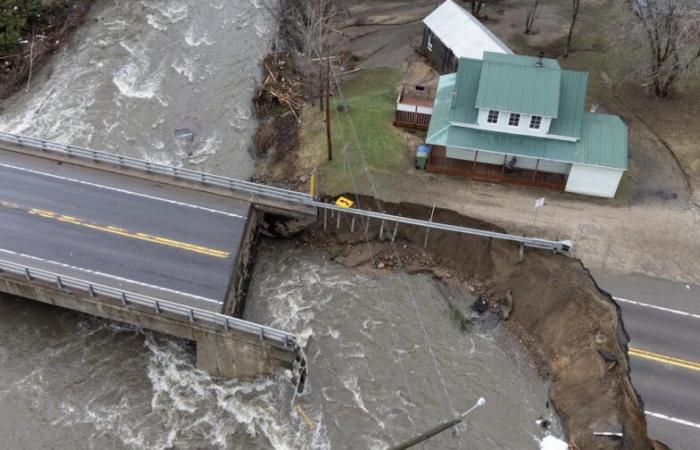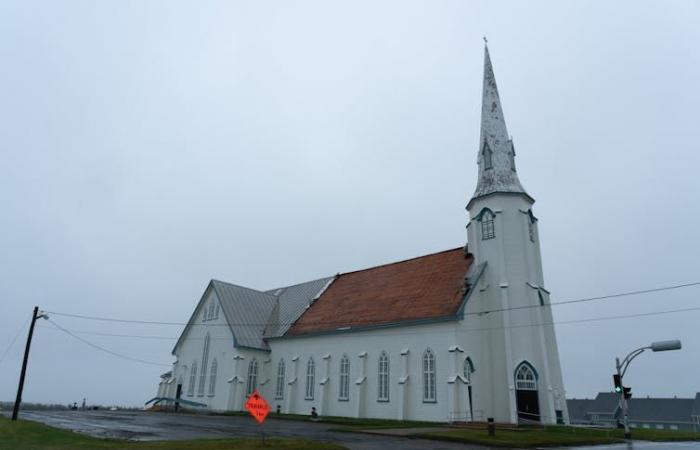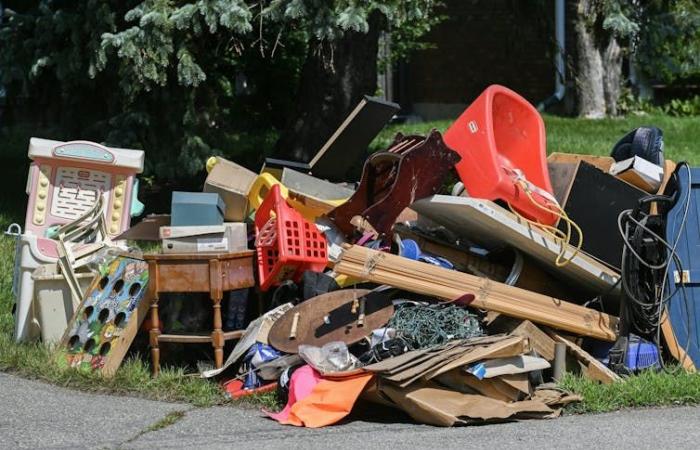Recently, the Montreal Metropolitan Community revealed its new mapping of flood zones: approximately 19,000 housing units in its territory are now located there.
The impact on property owners and municipalities will be great. A significant loss in land value and difficulty in insuring these properties is expected. Unsurprisingly, the demands are starting to be felt.
In reality, the CMM is only following the principles adopted by the Quebec government to modernize the regulation of flood zones.
Presented as an adaptation to climate change, the new maps classify flood zones into four risk categories (low, moderate, high and very high) and integrate much more data than the previous ones.
The majority of Quebecers live near water
This modernization is certainly necessary given the damage caused by flooding. In Quebec, floods are frequent and costly. The majority of the population lives near water, making approximately 80% of municipalities vulnerable. Floods in 2017 and 2019 forced the evacuation of thousands of people and caused more than $1 billion in damages.
In 2023, nearly 300 properties in Charlevoix have been affected. This year, rainfall associated with Storm Debby flooded thousands of basements, leading to an estimated 70,000 insurance claims.
Read more: New mapping of flood zones: four solutions to better support residents and municipalities
Our work within the University Observatory of Vulnerability, Resilience and Sustainable Reconstruction and the InterSector Flood Network of Quebec allows us to better understand the causes and consequences of these regulatory changes.
The establishment of a transitional regime raises problems
While waiting to finalize the new permanent normative framework, flood risk management is based on a transitional regime, in force since March 2022.
The Canadian Press/Graham Hughes
This framework replaces the old policies for protecting banks and flood zones and is an integral part of the Territorial Protection Plan against Floods, developed after the disasters of 2017 and 2019.
However, this transitional regime encounters several challenges. It imposes a uniform framework on all municipalities, prohibiting renovations as well as any new construction in high-risk areas.
Some specialists suggest, however, that several renovations could, in fact, increase the resilience of homes to flooding.
Other observers have criticized the lack of clarity in legal processes. The Quebec Federation of Municipalities stressed the need to specify the aspects where the transitional regime replaces municipal regulations. Many municipalities remain uncertain about their roles and responsibilities. The Union of Agricultural Producers in turn is concerned about restrictions on agricultural land, notably “buffer zones”, which reduce cultivable land and increase production costs for farmers.
Already thousands of subscribers to the La Conversation newsletter. And you ? Subscribe today to our newsletter to better understand the major contemporary issues.
In March 2023, the Quebec government announced adjustments to grant more autonomy to municipalities. They can now issue permits to renovate or demolish buildings in flood zones without ministerial approval, thereby clarifying their responsibilities and simplifying processes.
Despite these adjustments, concerns persist about the clarity of the measures, their application in various contexts, conflicts with existing regulations, and the consideration of local particularities.
Residents on the tightrope
There are also concerns about the impact on residents and restrictions on landlords. Uncertainty regarding the response of insurance companies remains. Already this year, Desjardins Group announced its intention to restrict mortgage services for homes located in flood zones.
In response to all these problems, some researchers propose the introduction of resilience certificates for buildings, the establishment of a relocation program for homes in high-risk areas, as well as compensation for municipalities affected by loss of tax revenue. The organization Architects Without Borders also recommends the adoption of adaptive measures, promoting resilient architecture and more innovative construction practices.
In Quebec, various strategies have been implemented to avoid forced relocations. The Quebec government is offering residents the opportunity to repair their homes with financial assistance or accept compensation to demolish and relocate.
We don't relocate by shouting scissors
However, this approach also poses certain problems. Indeed, many residents, particularly seniors and those who have inherited family properties, have deep ties to their territory, their community and their ways of life.
Furthermore, reconstruction can in turn cause new environmental impacts, especially in terms of greenhouse gas emissions and urban sprawl if residents are relocated to the outskirts of cities (where, often, land are cheaper and available).
Finally, the recently accentuated lack of housing in Quebec makes it more difficult to relocate residents to affordable housing, not located in flood zones.
What to do with heritage sites?
It should also be noted that several flooded areas include heritage sites. In Beauce, the response to the 2019 floods included the demolition of several properties, including some of heritage character. The heritage protection organization (GIRAM) and other opponents accused the government of acting too quickly without considering other solutions such as raising houses or building dikes.

The Canadian Press/Nigel Quinn
The transitional period allows the government to understand the risks and evaluate the strategies to put in place. It allows researchers to produce relevant knowledge. Some of them believe that this regime, both strict and flexible, facilitates coordination between ministries and with other institutions.
However, several challenges remain, such as the integration of new climate data, gaps in mapping, limited access to information, ineffective distribution of responsibilities and lack of resources among local authorities.
Learn lessons
Temporary laws have also been used in other countries for risk and disaster management. But elsewhere, as here, they pose implementation problems. A Harvard University researcher, for example, notes that temporary laws allow for quick and flexible responses, but they can also lead to higher transaction costs, increased administrative burdens and policy contradictions.
As Quebec updates its flood risk management framework, it is essential to learn from the transition period to build a better permanent framework. It will be essential to assess the policy implications and resources that will be needed to achieve the desired changes.
Environmental issues, but also ethical
Success will depend on overcoming practical challenges and meeting the needs of local communities, while reviewing current construction standards and practices. A reflection on the use of basements and their construction in new projects, for example, is becoming more and more essential. With climate change and the increase in associated disasters in Canada and around the world, new approaches are needed.

The Canadian Press/Graham Hughes
Very often, current practices do not sufficiently take into account the environmental and social costs, as well as the moral dimension of our decisions. The problem of flooding is, in Quebec as elsewhere, a political problem. It must therefore involve reflection on social justice, on the winners and losers of the decisions made, as well as on the ethical dimension of our individual and collective actions.









